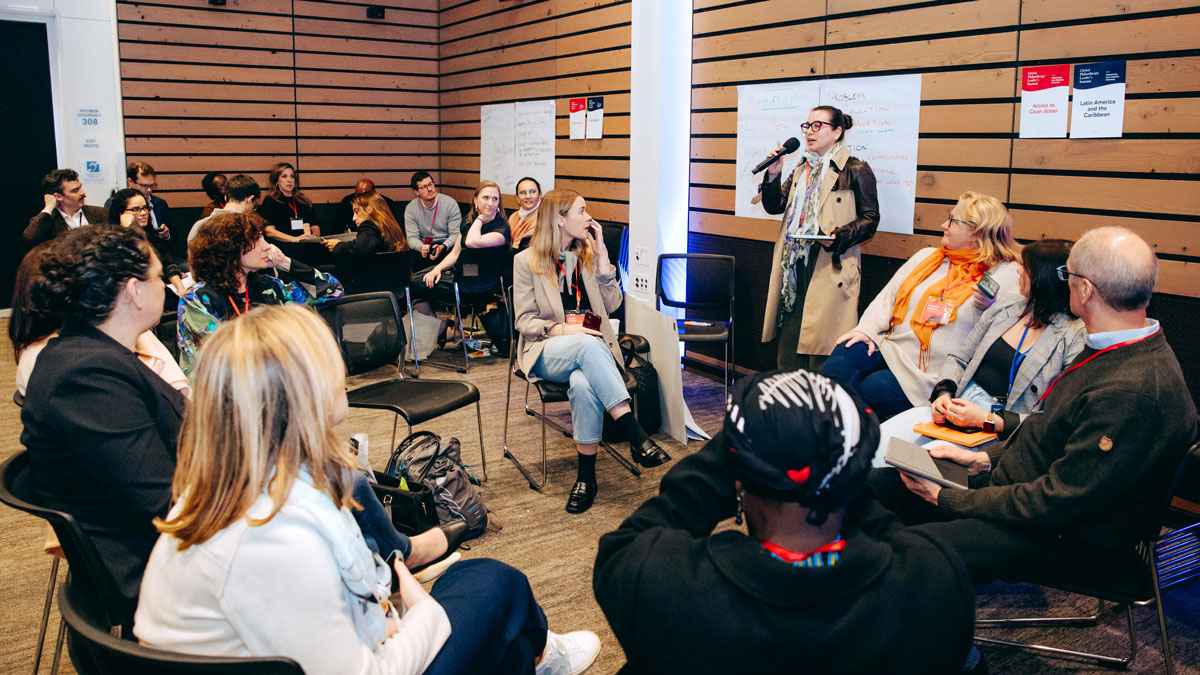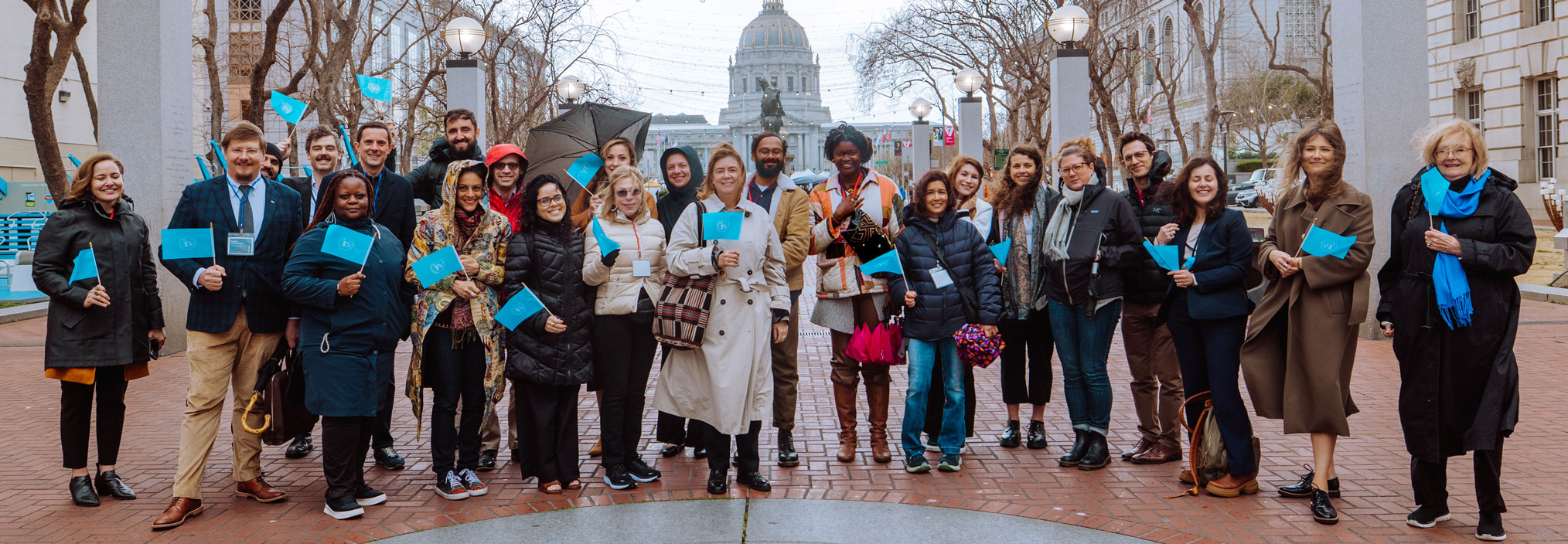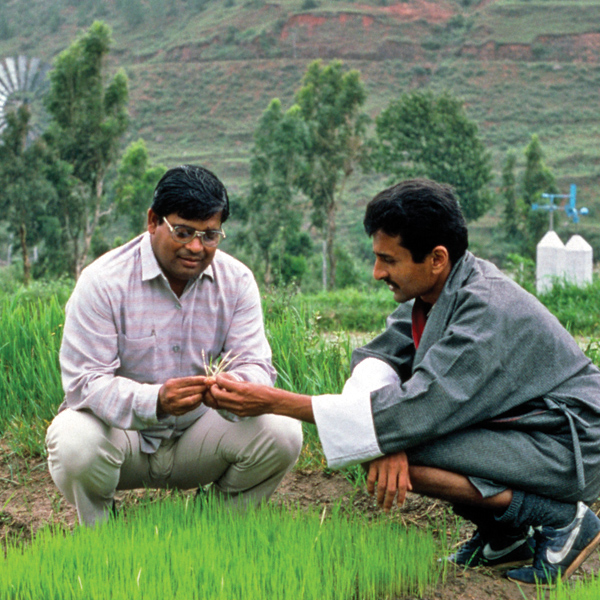Claire Poelking, Program Officer, writes about the need for organizations that support philanthropy and nonprofits with coordination, shared expertise, and convening.
When you need help, it is good to have a friend on speed dial and a strong community to rely on. From small challenges to big emergencies, investing in relationships, networks, and infrastructure in your circles helps navigate tough situations. But you can’t just develop friends, relationships, community, and support structures out of the blue or in times of struggle. They need consistent investment.
The same is true in philanthropy. And this year has emphasized how much we rely on shared infrastructure. We know nonprofit leaders are feeling uncertain about the future as public funding is slashed. MacArthur is responding by increasing our charitable payout to at least 6 percent for 2025 and 2026 and increasing our flexibility where possible. But there is also sector-wide infrastructure backing us up.
Philanthropic infrastructure is another way to say shared resources. We are relying on these now, more than ever.
Philanthropic infrastructure is another way to say shared resources. We are relying on these now, more than ever. MacArthur supports infrastructure organizations, as we have since the early days of the Foundation, so we can be good members of our community.
Role of Infrastructure
Organizations that support charitable giving organizations, nonprofits, and individual donors help us share learning and best practices, stay up-to-date on the challenges that nonprofits and the communities they serve are experiencing, and help coordinate donors to work together toward shared goals.
There might not be a lot of demand for infrastructure when everything is going smoothly. But at MacArthur, we rely on this work all the time to be better partners and peers. The role of infrastructure in our organization ranges from keeping us connected to other donors, who we can learn with and from, to advocating for communities, so we better meet their needs and champion their priorities with other decision makers.

Participants explore emerging philanthropic trends and strategies for maximum impact at the 2025 Global Philanthropy Forum Leaders Summit. Credit: Global Philanthropy Forum
At MacArthur, shared research has led us to increase indirect cost rates and provide more gen-op support; networks have helped us work with partners to streamline and clarify grant applications; collective work is transforming how data is used and managed in the sector; and infrastructure organizations have enabled us to share resources with grantees to help them navigate complex circumstances.
Sometimes infrastructure organizations are helping nonprofits and grantmakers increase their capacity with shared services. Many do not have in-house legal or communications support, and a few of our grantee organizations provide that support so everyone can be more effective.
Resources Matter, Especially in a Crisis
Having systems, partnerships, and shared knowledge as a baseline also makes it easier to adapt to drastic changes and defend fundamental freedoms. While all are essential, it is particularly important to have a good, networked infrastructure in times of need.
When we have the capacity, we think we have a responsibility to support the infrastructure that we all rely on.
Vetted information from interconnected organizations can help the entire sector respond and meet community needs. There are many great examples of organizations doing this, and here are just a few examples from the Philanthropy Field Support Program:
- Alliance for Justice, via its Bolder Advocacy program, clarifies the rules about nonprofit advocacy and provides nonprofits and foundations with an increased understanding of permissible advocacy activities under state and federal law. They also provide trainings on relevant topics like strategic communications to help organizations advocate for their right to pursue their missions.
- Global Philanthropy Forum leverages its global community and perspective to engage with the private and public sector. It provides an ecosystems approach to funding and fosters cross-sector collaboration, which has been increasingly valuable as donors seek to understand how to respond to changes in government spending.
- International Center for Not-For-Profit Law provides technical and research assistance to support an enabling legal environment for civil society and philanthropy in more than 100 countries. ICNL is a leading source of information on laws affecting civil society and civic freedoms for nonprofits and funders.
- Through the Protecting and Advancing Diversity, Equity, and Inclusion Pro Bono Initiative (PADEI), the Lawyers’ Committee for Civil Rights Under Law helps nonprofits conduct analyses of their racial equity and diversity, equity, and inclusion programs to proactively ensure they are compliant with relevant federal civil rights laws and are legally defensible while still achieving organizations' goals of advancing racial justice.
These nonprofits’ resources and programs are well-vetted, well-informed, and well-used and often free. And while everyone in philanthropy and the nonprofit sector can use and benefit from them, not everyone has the capacity to fund this type of work.
So, when we have the capacity, we think we have a responsibility to support the infrastructure that we all rely on. We believe a strong philanthropic and nonprofit sector that leads by living its values can help society meet its biggest challenges. And these infrastructure support organizations are a timely and evergreen example of how the sector stays stronger, together.




